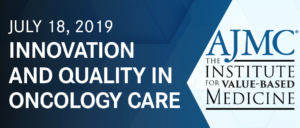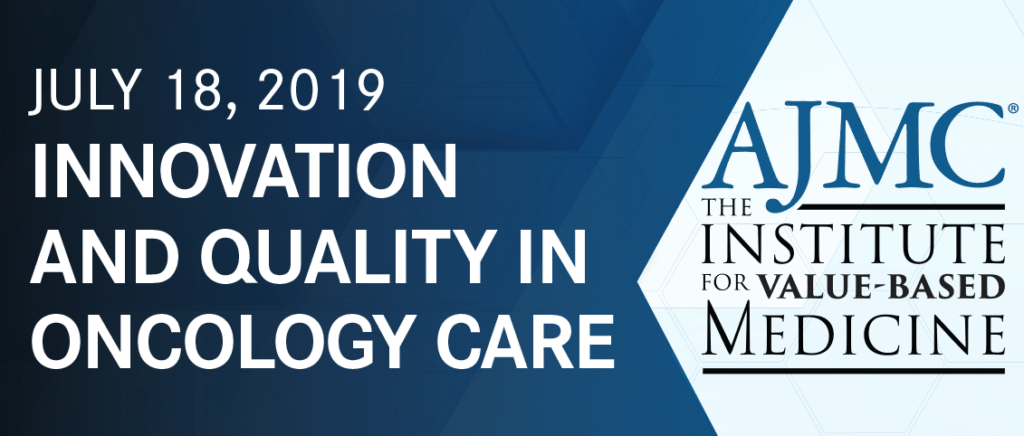 AJMC’s Institute for Value Based Medicine recently hosted an event titled “Innovation and Quality in Oncology Care.” It featured several leaders in the transformation of oncology care who are changing the way cancer care is provided and improving patient experiences and outcomes. In addition to transformation, the importance of data emerged as a key theme. Healthcare has been reactive for so long – whether it’s providing socioeconomic support,addressing financial toxicity, or providing care to a high risk patient who is ailing. Value-based care is proactive, and it anticipates patient needs to provide real time outreach and intervention. Without access to data and information, that is a high bar to clear.
AJMC’s Institute for Value Based Medicine recently hosted an event titled “Innovation and Quality in Oncology Care.” It featured several leaders in the transformation of oncology care who are changing the way cancer care is provided and improving patient experiences and outcomes. In addition to transformation, the importance of data emerged as a key theme. Healthcare has been reactive for so long – whether it’s providing socioeconomic support,addressing financial toxicity, or providing care to a high risk patient who is ailing. Value-based care is proactive, and it anticipates patient needs to provide real time outreach and intervention. Without access to data and information, that is a high bar to clear.
New payment models like the Oncology Care Model as well as the arrival of many new costly and complex treatments are forcing healthcare providers and payers to take a new approach to care. From creating more transparency about costs, leveraging data to guide treatment decisions, or doing more to identify patients who are going to need added support – the status quo is out.
Leveraging Data and Machine Learning
Barry Russo, CEO of The Center for Cancer and Blood Disorders (CCBD), shared what his practice is doing to transform cancer care. In order to deliver value-based care, a whole host of support services are required beyond clinical care – from massage therapy to psychosocial support to dietary guidance – and CCBD is doing it all. However it is still not enough. Russo cited a recent statistic that for an oncologist to read all of the information available for their specialty they would need 29 hours a day – in other words: it’s impossible. To ingest what he referred to as a data explosion, CCBD is looking to artificial intelligence (AI). He differentiated this cognitive analysis from predictive analysis, highlighting that AI makes predictions, but it also learns from them – right or wrong.
CCBD has struggled with risk stratification, which is essential for value-based care success to ensure you are providing added care and support to those most in need. They started by focusing their case managers’ attention on all patients with stage 4 cancer. When they found they were still missing patients, they changed focus to all patients with lung, head and neck, and pancreatic cancer at stage 3 and 4, but were still missing a population of high cost, high risk patients.
The Surprising Discoveries
Analysis of their data showed it’s not always the sickest patients who are the costliest. CCBD’s patients on aromatase inhibitors – patients they figured were doing fine – were incurring other costs due to falls, joint replacements, and stays in skilled nursing facilities. Those costs are attributed to the practice in these new episode-based payment models like OCM, whether they are cancer related or not.
Socioeconomic factors were a surprising trend that emerged from their data. Patients with lower education levels, housing insecurity, and other social factors added just as much complexity to patient care as clinical factors.
Looking at patients through this new lens helped them identify high risk patients with more accuracy. Using clinical, socioeconomic, and claims data, the AI tool can generate a more accurate list of high risk patients, allowing CCBD to deploy resources proactively to help them.
Instead of doing a bi-weekly analysis of patients who did end up in the hospital, now they look at patients who are at risk in multiple categories and reach out to them. This proactive approach is working – pain, hospice, and palliative care referrals are up. Social workers are actively helping patients with transportation barriers, increasing awareness of social programs, and providing extra care to patients who have had a fall in the last month. It may not have anything to do with cancer treatment, but these tactics treat the whole patient and improve outcomes.
What’s Next?
The next challenge for CCBD is how to get all of the data integrated and available at the point-of-care. Physicians need to understand all the factors impacting each patient to determine the best course of action for them. Moving forward it would be very difficult to continue to operate with an EMR that’s just a data repository – machine learning is a must.
The other speakers shared similarly creative, transformational thinking around ways to work together to improve care, reduce costs, and deliver high value, sustainable care for patients. At Navigating Cancer, we are working to create digital tools to do the same thing – enable healthcare providers to do more. Even when providers may not be able to add more people, with our solution they can leverage data, mobile tools, and a shared digital workboard to stay in sync and quickly identify patients who may need some added support or outreach. Transformation is going to take teamwork, and it’s already well underway.
Interested in seeing what we’re working on at Navigating Cancer? Contact us today!
